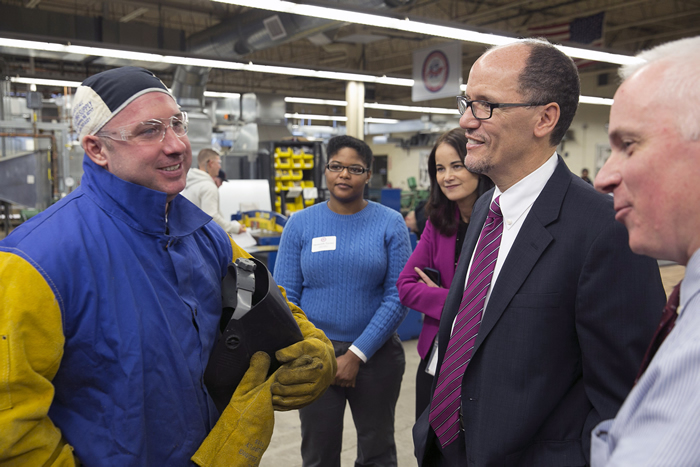

Share
Minnesota’s union membership rate held steady at 14.2 percent of the workforce in 2015 with 363,000 working Minnesotans belonging to a union. The Bureau of Labor Statistics’ annual survey of union membership also showed the national rate holding steady at 11.1 percent.
While membership rates slightly increased in North and South Dakota and slightly decreased in Iowa, union membership in Wisconsin plummeted from 11.7 to 8.3 percent as Governor Scott Walker continued attacks on collective bargaining.
“It shouldn’t surprise anyone that Minnesota has both a higher unionization rate, higher median income and a better workplace safety record than any of our neighbors,” said Minnesota AFL-CIO President Bill McCarthy. “Higher union density means a higher standard of living for all working people.”
Bureau of Labor Statistics data shows people represented by unions earn higher wages, have quality, affordable health care and can look forward to a more secure retirement. Additionally, unions significantly reduce wage inequalities. Women represented by unions earn an average of $212 more per week than non-union women.
Working people of color particularly benefit from union representation. Latino and African-American workers earn 23.1 percent and 17.3 percent more respectively when they are represented by a union.
U.S. Labor Secretary Thomas Perez, in a statement issued Thursday with the 2015 membership numbers, said “strong unions empower all working people, putting upward pressure on wages and labor standards throughout the economy. After all, you don’t need a union card to have benefitted from the advent of the weekend.
“So we all have skin in the game when unions are threatened and collective bargaining rights come under attack,” he added. “When a larger percentage of workers belong to unions, the middle class grows and thrives.”
As unions have shrunk, wages have dropped or stagnated for many jobs and many people have been pushed down the ladder of economic opportunity.
Union membership is strongest in the Northeast, the Great Lakes and the Pacific Coast, and lowest in the South, the BLS data shows.
Public workers are five times more likely to be unionized (35.2 percent) than private-sector workers (6.7 percent), with teachers and public safety workers leading the way. Public and private densities changed little from 2014. The public sector added 23,000 unionists, to 7.241 million last year, slightly fewer than the 7.554 million private-sector unionists.
The BLS data was released the same day that Gallup ranked Minnesota with the highest job creation index in the nation.
“As we continue to lead the nation in job creation, Minnesota’s labor movement is committed to ensuring these new jobs are family-sustaining jobs,” noted McCarthy.
This article includes information adapted from Press Associates Union News Service.

